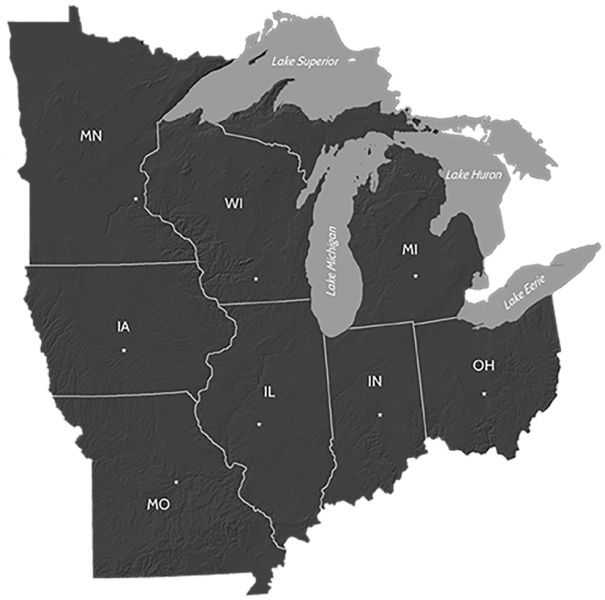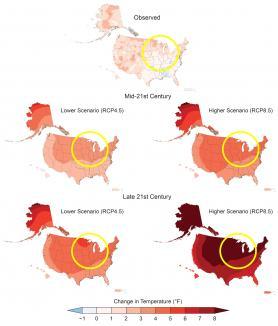The Great Lakes play a central role in the Midwest, where they provide an abundant freshwater resource for water supplies, industry, shipping, fishing, and recreation, as well as a rich and diverse ecosystem. The same can be said for the upper Mississippi, lower Missouri, Illinois, and Ohio River systems. Episodes of widespread heavy rains in recent years have led to flooding, soil erosion, and water quality issues from nutrient runoff into those systems. Land managers are beginning to change some of their practices to better manage excess surface water. For more information on regional impacts of a changing climate on the Great Lakes, see the Great Lakes section of this site.
Citizens and stakeholders in the Midwest value their health and the well-being of their communities—all of which are at risk from increased flooding, increased heat, drought and lower air and water quality under a changing climate.
Energy in the Midwest
The Midwest is a major consumer of coal. In 2015, coal provided 56 percent of the electricity consumed in the region, and the region’s eight states accounted for 32 percent of the nation's coal consumption (in BTUs). However, coal’s share of electricity production is declining in the Midwest, following the national trend—the 2015 figure is down from that of 2008, when coal accounted for more than 70 percent of electricity consumption in the Midwest.
Wind power is a small but growing source of electricity for the region. Iowa leads the nation in per capita consumption of wind power, with wind providing over 30 percent of the state’s electrical needs in 2015.





